Illustrator J.C. Leyendecker’s View of American Masculinity to Be Explored in New Exhibition
- Oops!Something went wrong.Please try again later.
- Oops!Something went wrong.Please try again later.

With gender identity being very much a matter of public discussion and a centerpiece in contemporary fashion, the New-York Historical Society is preparing to unveil an exhibition devoted to illustrator and commercial artist J.C. Leyendecker.
The longtime Saturday Evening Post illustrator, who died in 1951, cast a long shadow on the country’s visual culture in the first 30 years of the 20th century. In addition to influencing such artists as Norman Rockwell, who over time succeeded him at the weekly magazine’s leading illustrator, Leyendecker created the distinguished “Arrow Collar Man,” Ivory Soap ads and work for other other mainstream brands that relayed queer undertones. As a gay man who was not public about his sexuality, his artistry hints at society’s view of homosexuality at that time.
More from WWD
Inside the 2023 Center Dinner Benefitting The LGBTQ Community Center
Inside Avant-garde Fashion Photographer 'Gus' Peterson Spotlighted in New Exhibition
“Under Cover: J.C. Leyendecker and American Masculinity” debuts at the NYHC on May 5 and will run through Aug. 13. It is being organized from the collection of the National Museum of American Illustration in Newport, Rhode Island.
The NYHS’s president and chief executive officer Louise Mirrer said the exhibition is part of the organization’s ongoing commitment to tell stories of Americans whose lived experience, though important and consequential to U.S. history, are often absent from textbooks in schools and colleges.
The German-born Leyendecker relocated as a youngster with his family to the U.S. and settled in Chicago in 1882. Years later while studying at the Chicago Art Institute, he tried his hand at drawing and anatomy. That eventually led to Leyendecker, and his brother Frank, studying for a year at the Académie Julian in Paris. Around 1899, the brothers returned Stateside, put down roots in Hyde Park, opened their own studio and moved to Manhattan the following year.
J.C. Leyendecker soon landed his first commission for the Saturday Evening Post, which would be the start of a 44-year run. The artist’s ads for Kuppenheimer suits and Interwoven socks strengthened those brands and helped establish the men’s fashion of the time. (Kellogg’s Corn Flakes and U.S. Navy posters were also part of his portfolio.)
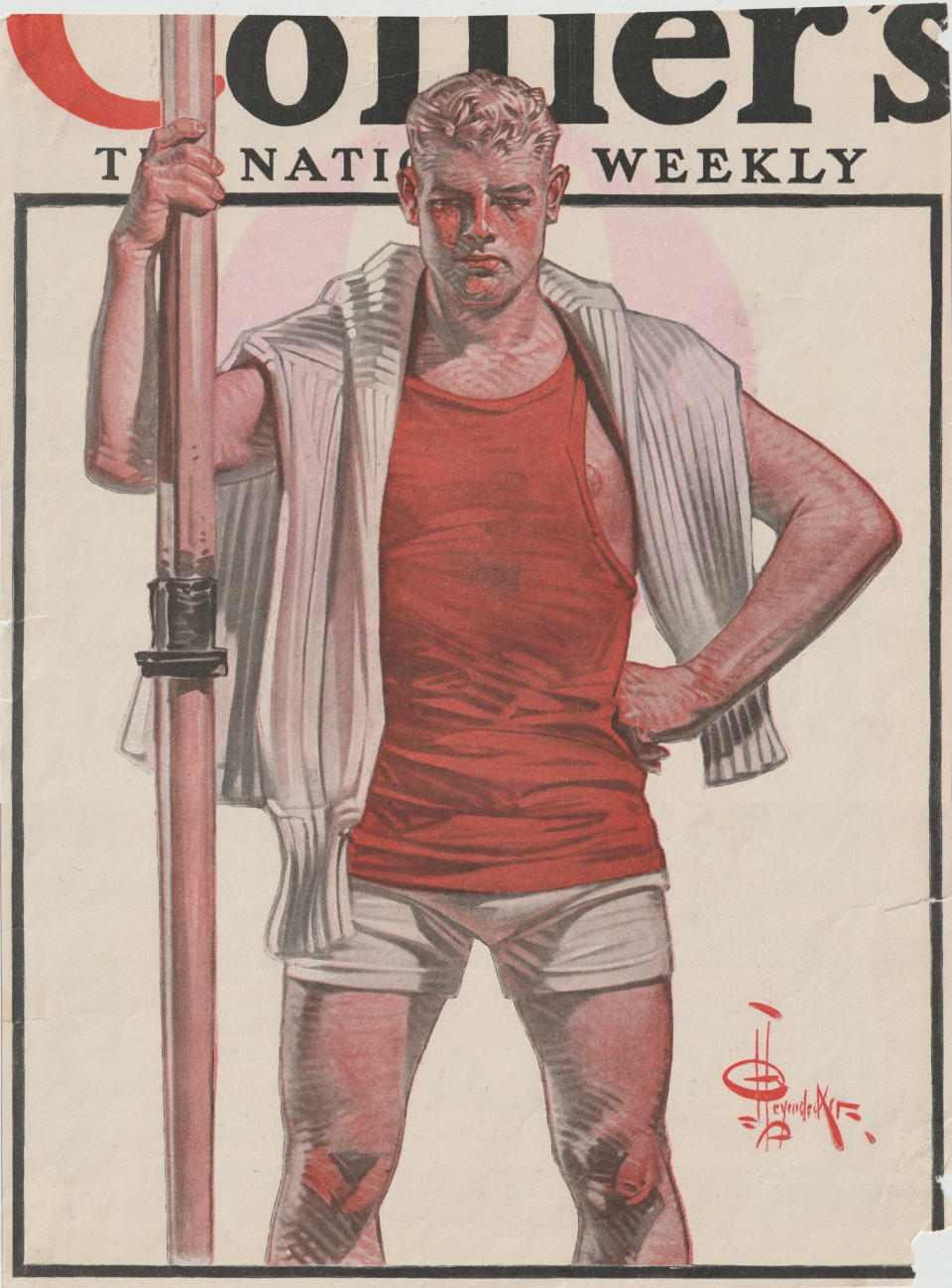
Leyendecker’s illustrations “set the ideal for a man about town,” according to guest curator Donald Albrecht. His dexterity was applied to the athlete, whether that be a football player or swimmer, the man about town such as the “Arrow Collar Man,” who was admired by men and women as the model of well-dressed masculinity, and a more effeminate persona, as seen in the Interwoven sock ads. “People took their cues about what it meant to be an American man from Leyendecker’s depictions. They were very white and WASP-y. There was also an obsession with the Ivy League [image].” said Albrecht.
Divided in two sections, the show examines Leyendecker’s depictions of the male body, semi-nude or in body-baring garments, and also highlights his images of male intimacies such as sexually charged looks. His nationalistic ideal of elite and athletic white male beauty is offset with such counternarratives as images of well-dressed African American men from the Harlem Renaissance. “It provides context of what was going on elsewhere beyond his work and world.”
Asked about Leyendecker’s influence on fashion, designer Stan Herman noted that the artist once had a studio in Bryant Park Studios, the same building where Herman has worked for 45 years. “His influence as an illustrator is infinite. There has never been anyone quite like him and he is truly one of the great illustrators of all time,” Herman said. “Any designer today with a great respect for haberdashery and fantasy would know his work. I believe that Ralph [Lauren] has that gorgeous stance to his clothes.”
The Leyendecker show is also a precursor to the NYHS’s new wing, which is being developed with the American LGBTQ+ Museum. Noting how Leyendecker’s heyday stretched from the early 20th century into the ’30s, Albrecht said the illustrator was well-known at that time for his depictions of men, especially fashionable ones in the Saturday Evening Post and Collier’s magazine. Leyendecker’s lover Charles Beach routinely modeled for the artist and was featured as the “Arrow Collar Man,” which was later considered one of the standout advertising campaigns.
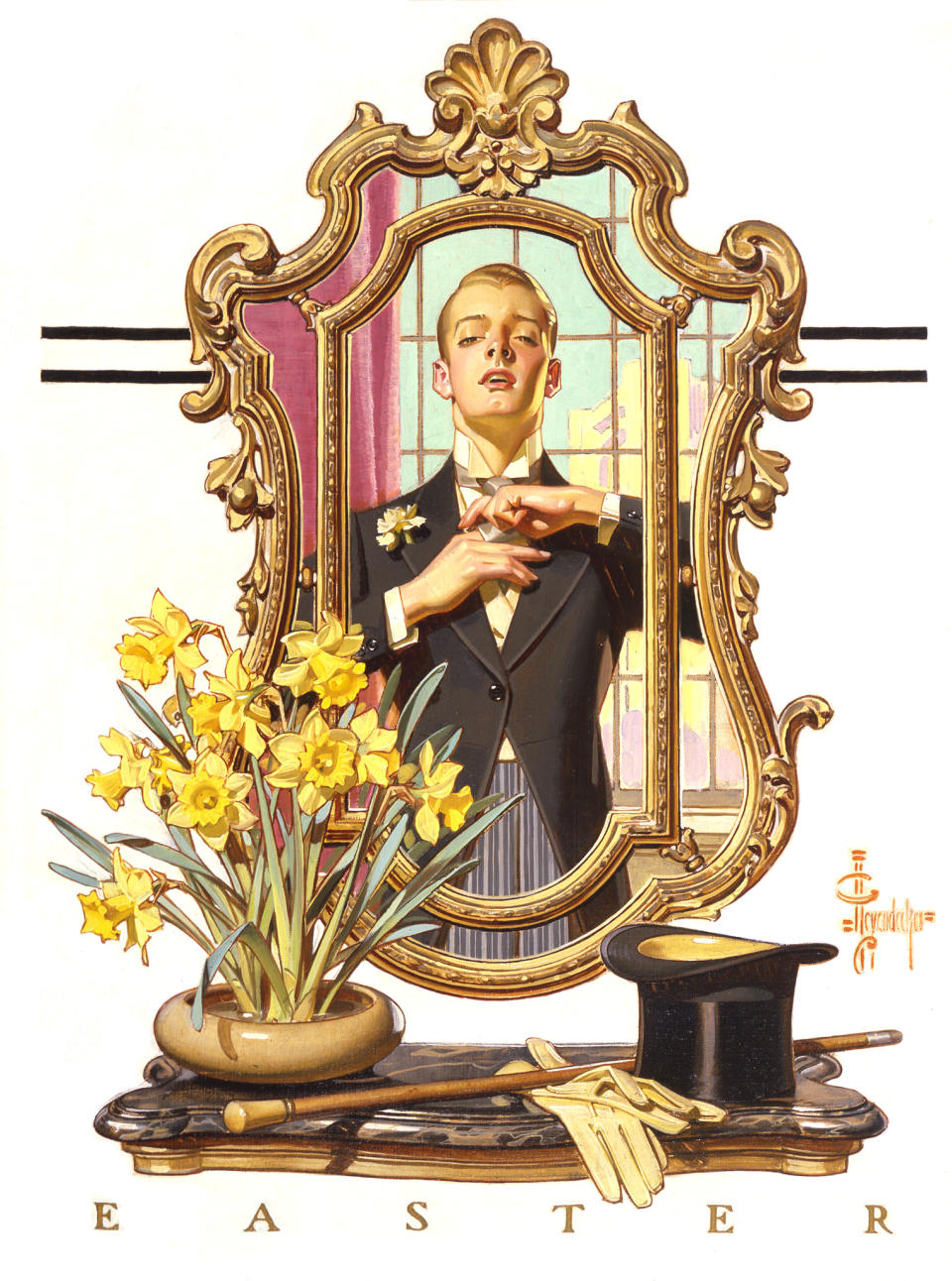
Albrecht said the upcoming exhibition reflects the historical society’s commitment to LGBTQ issues and will serve as a test run before the new wing’s opening. Well aware of the current popular vernacular and interest in masculinity, the expression of it, and what it means to be a man today, the NYHS thought the Leyendecker show would be interesting “from an institutional standpoint as well as a current events one.” Albrecht said. “Homosexuality was more fluid, open and acceptable in the Aughts, the Teens and the ’20s. In the ’30s, there was more of a clampdown, which became more rigid, during the Second World War and especially afterwards in the McCarthy era.”
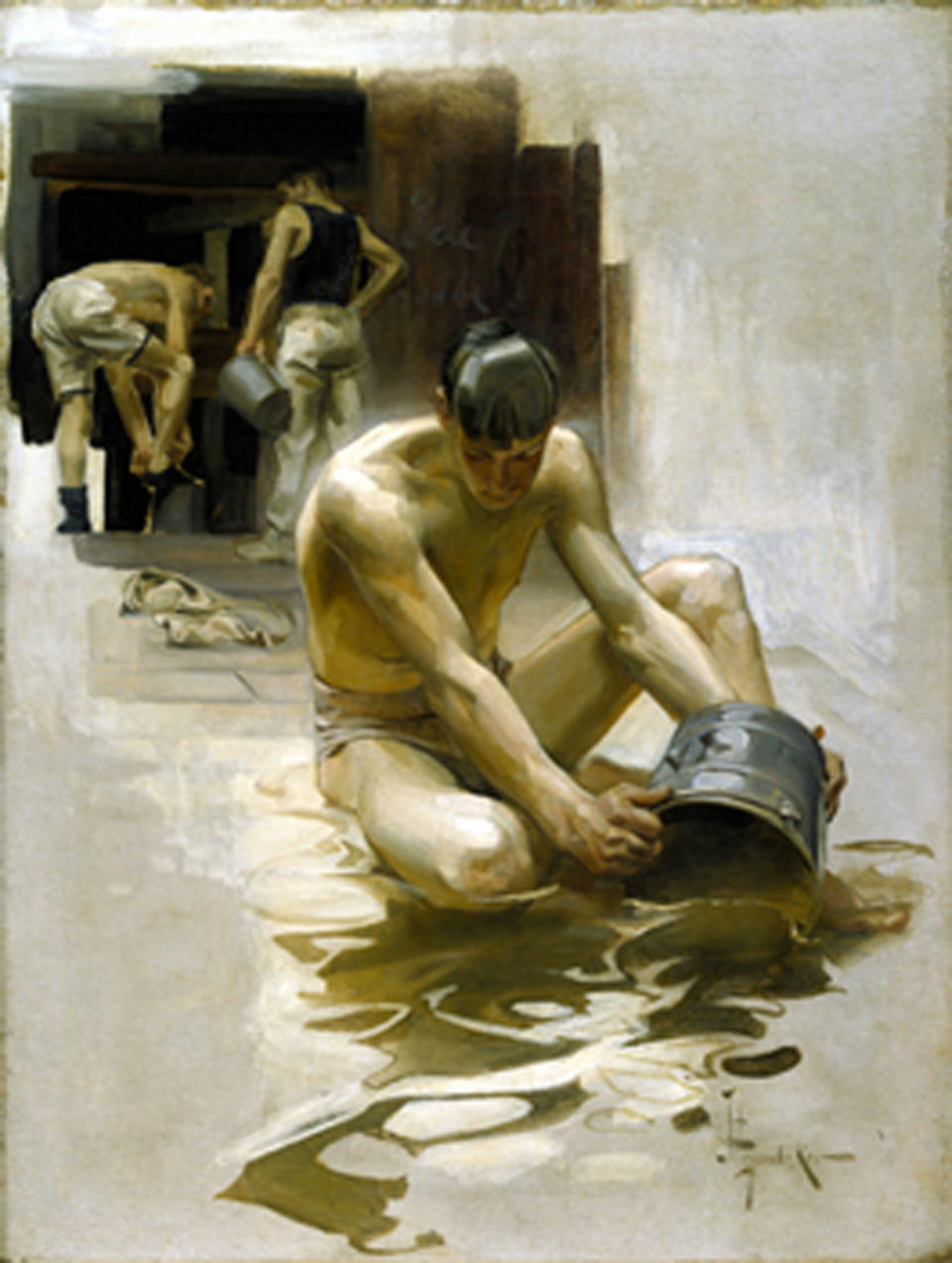
Although during his career Leyendecker was not the only illustrator who depicted semi-clad men and men in social situations that “in our eyes [now] look gay,” they must not have appeared so to readers of that time, since they appeared in mainstream magazines.
However, during “the war years, when the United States stepped out onto the world stage, there was a concern that a gay man and a lesbian could be blackmailed,” Albrecht said. “And the McCarthy era of the early ’50s was very homophobic.”
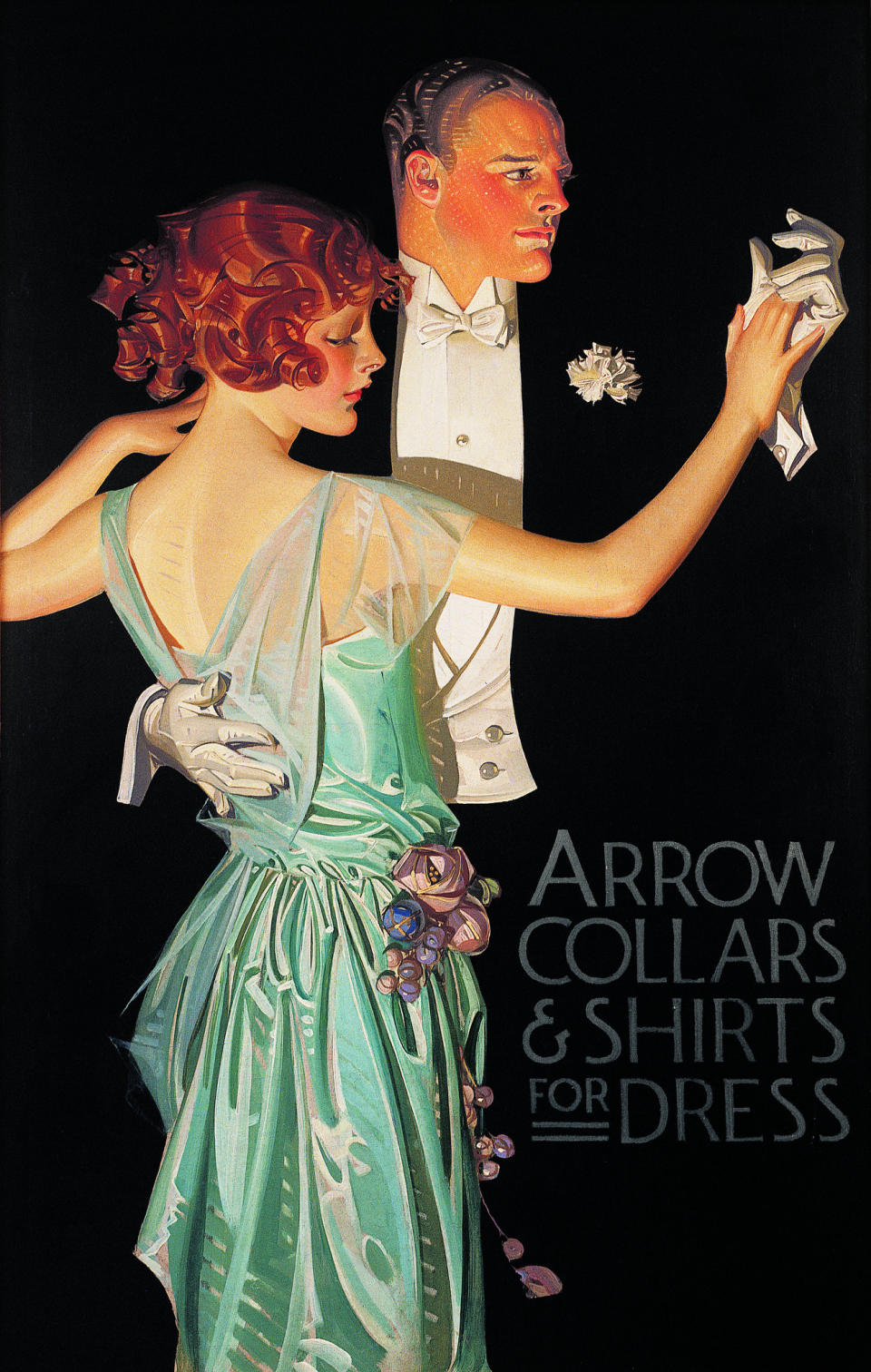
Nineteen of the artist’s original oil paintings, and a sampling of his magazine covers, and commercial illustrations that appeared in popular publications, on roadside billboards, in store windows and on mass transit will be featured in the show. While Leyendecker is known as “a grand master of the golden age of American illustration,” Albrecht said “Under Cover: J.C. Leyendecker and American Masculinity” has a slightly different perspective of other exhibitions that have included his work in that it alludes to his sexuality.
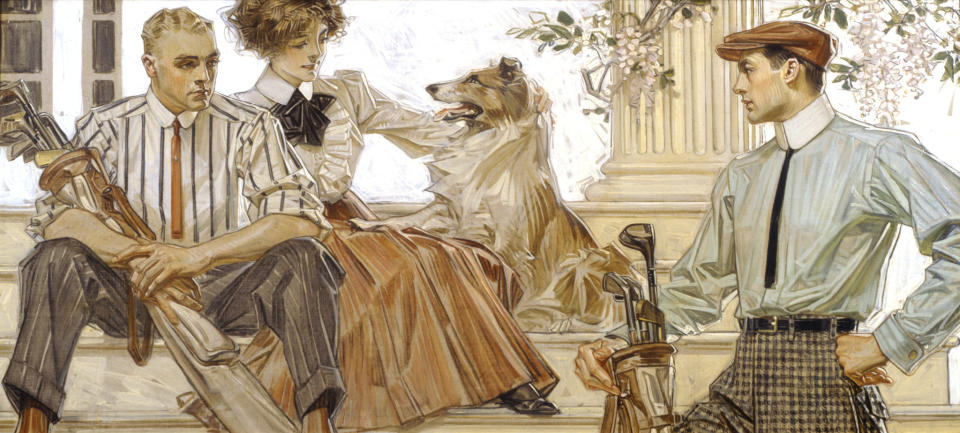
Best of WWD

